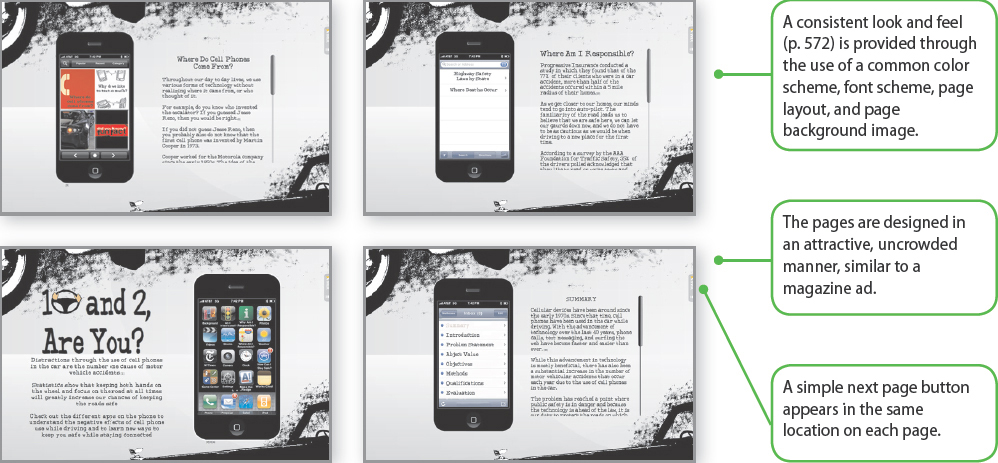View a Multimodal Essay
The following examples are drawn from the multimodal essay written by Tanya Patel of the University of Texas at Austin. Tanya developed her essay using Wix (a free Web program) and Adobe Photoshop. Note her use of text, illustrations, color, headings and subheadings, and menus to clearly convey her argument about the danger of using cell phones while driving.

Checklist for Creating Multimodal Essays
 Use your experiences writing academic essays as a foundation for your work on a multimodal essay.
Use your experiences writing academic essays as a foundation for your work on a multimodal essay.
 Reflect on your purpose and role, the expectations of your readers, and the context in which your essay will be written and read.
Reflect on your purpose and role, the expectations of your readers, and the context in which your essay will be written and read.
 Develop and organize your line of argument by choosing a main point, reasons, and supporting evidence. Consider your role as you plan, and consult other sections of this book that focus on composing processes related to that role.
Develop and organize your line of argument by choosing a main point, reasons, and supporting evidence. Consider your role as you plan, and consult other sections of this book that focus on composing processes related to that role.
 Choose your composing tools, keeping in mind their appropriateness for your writing situation and their tendency to drive design decisions in particular directions.
Choose your composing tools, keeping in mind their appropriateness for your writing situation and their tendency to drive design decisions in particular directions.
 Develop an appropriate and consistent design for your document, paying particular attention to the following:
Develop an appropriate and consistent design for your document, paying particular attention to the following:
- Consistent use of fonts, colors, shading, borders, and rules
- Readable fonts for headings and subheadings (such as 16-point Times New Roman or Verdana)
- A readable body font designed for on-screen reading (such as 11-point Calibri or Georgia)
- The placement of titles, text, and illustrations, with illustrations labeled and located near relevant text passages
- If used, transitions between pages (dissolves, page flips) that are quick and not distracting
- If used, background images and sounds that are chosen to enhance rather than obscure the elements on each page
 Create navigation tools such as Next and Previous buttons, links, menus, and tables of contents.
Create navigation tools such as Next and Previous buttons, links, menus, and tables of contents.